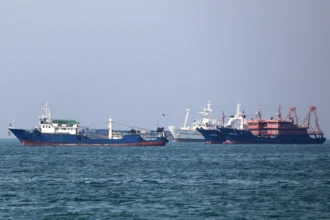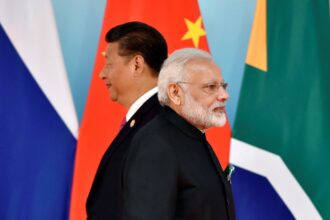China has emerged as the dominant buyer of Russian crude, capitalizing on discounted prices and geopolitical frictions, even as the United States increases pressure on India to reduce its purchases. The shift highlights how global energy flows are being reshaped by sanctions, alliances, and strategic maneuvering in the wake of Russia’s war in Ukraine.
China’s Expanding Appetite for Russian Oil
Since the imposition of Western sanctions on Moscow, Beijing has steadily deepened its energy ties with Russia. Recent trade data shows:
- China has become the largest importer of Russian crude, surpassing traditional buyers in Europe who drastically cut supplies.
- Russian oil now accounts for a growing share of China’s total imports, with ESPO (Eastern Siberia-Pacific Ocean) crude and seaborne Urals shipments making up the bulk of flows.
- The purchases are heavily discounted, often $10–$15 per barrel cheaper than global benchmarks, giving Chinese refiners a significant cost advantage.
This energy partnership not only helps Russia sustain export revenues under sanctions but also enables China to diversify its supply away from the Middle East, strengthening its energy security strategy.
U.S. Pressure on India
While China has doubled down on Russian crude, the United States has intensified efforts to curb India’s purchases. Washington has:
- Privately urged New Delhi to scale back imports of Russian oil and align more closely with Western sanctions regimes.
- Warned Indian refiners and shipping firms about secondary sanctions risks, especially when payments or logistics involve sanctioned Russian entities.
- Emphasized the geopolitical stakes, framing Indian purchases as weakening global efforts to isolate Moscow.
India, however, has resisted U.S. pressure, arguing that its purchases are legal under existing frameworks and are necessary to stabilize domestic energy costs. The country has also underscored its strategic autonomy, balancing relations with the West, Russia, and China alike.
Russia’s Oil Lifeline
The growing dependence on Asian markets underscores Russia’s ability to redirect crude flows away from Europe. Before the Ukraine war, Europe accounted for more than 50% of Russian oil exports; today, Asia — led by China and India — has absorbed much of that displaced supply.
For Moscow, China is a particularly attractive customer:
- Stable, long-term demand from the world’s largest energy consumer.
- Established infrastructure like the Eastern Siberia-Pacific Ocean pipeline, which provides a direct route.
- Political alignment, with Beijing offering rhetorical support and refusing to condemn Russia’s actions in Ukraine.
Geopolitical Undercurrents
The shifting oil trade highlights broader geopolitical dynamics:
- China-Russia strategic partnership: Energy is binding the two powers more closely together, reinforcing a counterweight to Western alliances.
- U.S.-India balancing act: Washington sees New Delhi as a crucial partner in its Indo-Pacific strategy but is frustrated by India’s continued energy cooperation with Moscow.
- Global energy realignment: Western sanctions have fractured traditional supply chains, accelerating the rise of Asia as the central hub of global crude flows.
Risks and Challenges
Despite its success, China’s Russian oil gamble carries risks:
- Overreliance on discounted Russian crude could expose Beijing if geopolitical dynamics shift.
- Payment mechanisms, often routed through yuan settlements or intermediaries, remain vulnerable to future sanctions tightening.
- Environmental and logistical bottlenecks, including port capacity and pipeline limitations, could constrain growth.
For India, the challenge lies in managing U.S. pressure while keeping energy costs low. While its imports have helped stabilize domestic inflation, an escalation of sanctions could complicate financing, shipping, and insurance of Russian barrels.
Outlook
The immediate outlook suggests that China will continue to scoop up Russian crude, exploiting the discounts as long as they last. India is unlikely to fully bow to U.S. pressure but may quietly recalibrate purchases to avoid secondary sanctions.
In the longer term, the global oil trade is undergoing a fundamental transformation. With Europe cutting ties to Moscow, Russia’s reliance on Asia is no longer a temporary adjustment — it is the new normal. China stands to gain the most from this shift, both economically and strategically, as it cements itself as the indispensable buyer of Russian energy.














